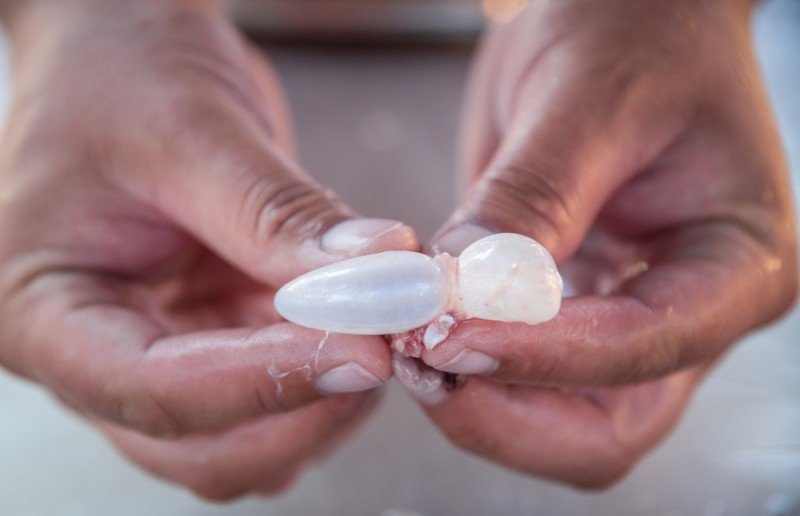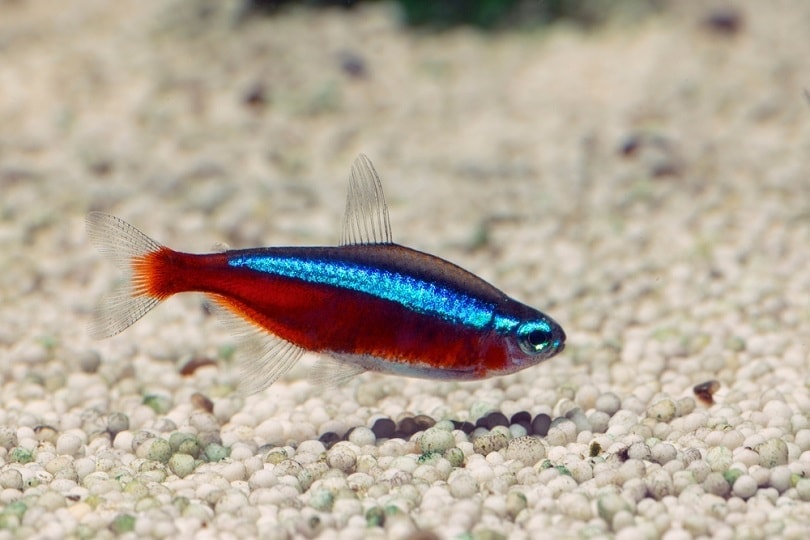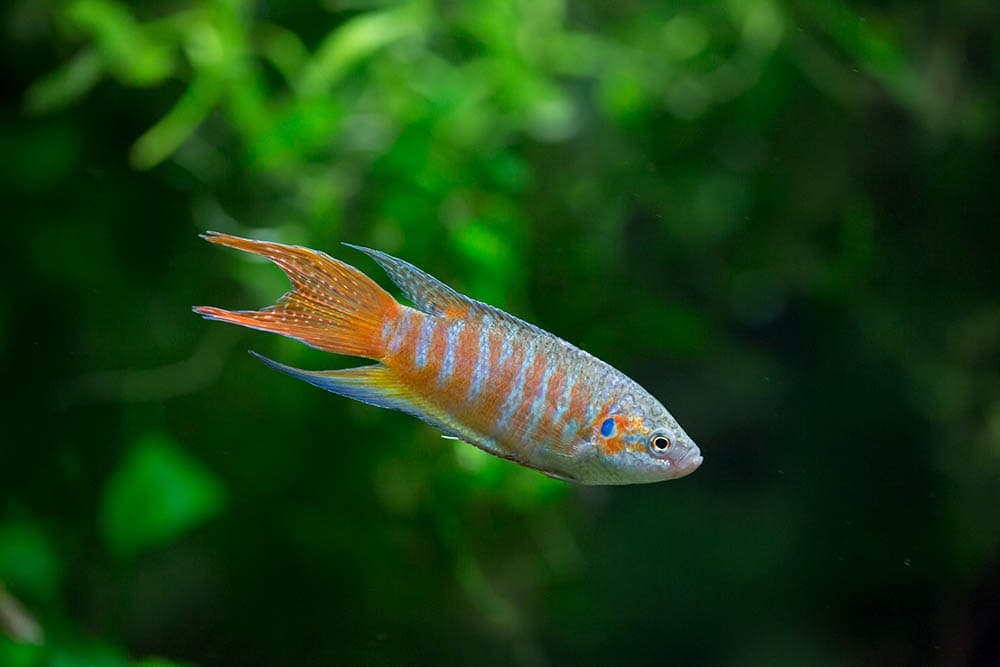Clownfish: Facts, Pictures, Care Guide, Varieties & Lifespan

Updated on
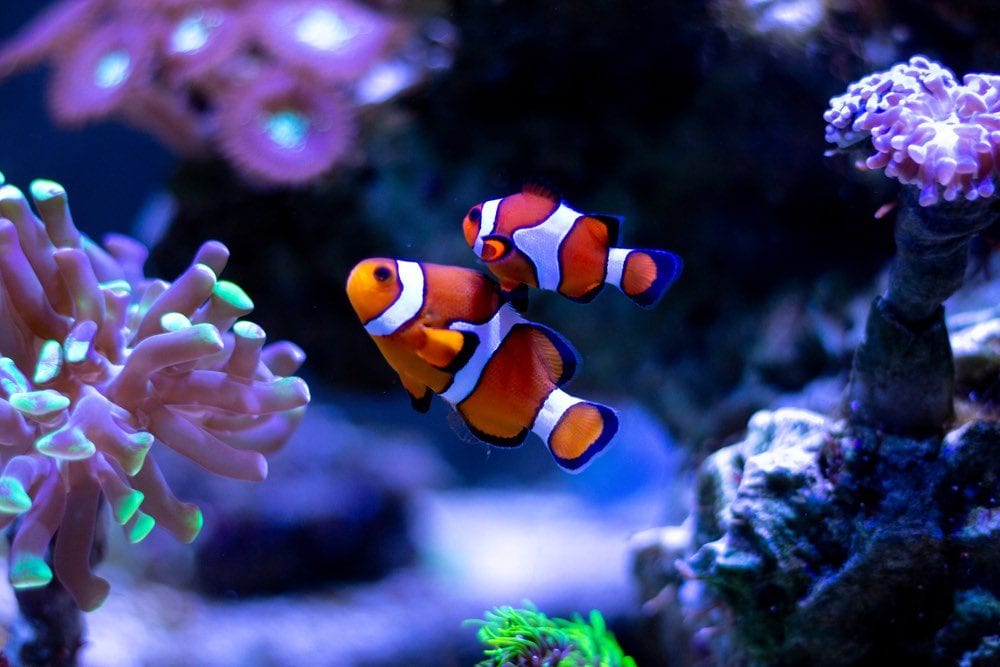
Clownfish are one of the most popular saltwater fish in the aquarium hobby. They are well-known for their beautiful coloration that looks striking in an aquarium. Clownfish love to live with anemones which should be included in their captive living environment.
Their beauty and elegance in a marine aquarium are going to keep you intrigued and interested in learning how these fish should be kept. Clownfish are better suited to intermediate fish keepers, but many beginners can keep clownfish as their first saltwater fish with help and guidance.
If you are interested in learning more about clownfish and how you can keep them happy and healthy in your aquarium, then this article is perfect for you!
Quick Facts about Clownfish

| Species Name: | Amphiprionae |
| Family: | Pomacentridae |
| Care Level: | Intermediate |
| Temperature: | 72°F–78°F |
| Temperament: | Peaceful |
| Color Form: | Yellow, black, red, & orange with white details |
| Lifespan: | 3–10 years |
| Size: | 2–12 inches (species dependent) |
| Diet: | Omnivore |
| Minimum Tank Size: | 30–55 Gallons |
| Tank Set-Up: | Anemones and coverage |
| Compatibility: | Peaceful community |
Clownfish Overview

There are over 30 different species of marine clownfish, and each species reaches a different size and the individual care requirements differ. Clownfish live in a saltwater habitat where anemones are present. These fish have special mucous membranes that protect them from the stings of an anemone. They live close to anemones where they feel safe and protected from other predatory fish. What makes the clownfish so interesting is that they are one of the only saltwater fish that can safely cohabitate with anemones. They have somewhat of a symbiotic relationship with anemones and in return, the clownfish provides the anemone with food and cleaning.
Clownfish can be found in warmer waters, like the Red Sea and Pacific Oceans. They take shelter in reefs or lagoons where they use anemones as their home. Clownfish can only live in ten out of the thousands of species of sea anemone, but luckily most of these anemones can thrive in a captive saltwater setup.
How Much Do Clownfish Cost?
The price of a clownfish depends on the type of species you wish to keep. Let’s start with the most commonly kept species of clownfish which is the Ocellaris clownfish (also referred to as the common clownfish or anemonefish). This species costs around $20 to $50, which makes them the cheapest clownfish on the market.
More advanced and larger species of clownfish like the maroon, Clark’s anemone, and saddle clownfish sell for $35 to $100. These clownfish may be slightly more expensive, but their beauty in comparison to the common clownfish is worth it.
Typical Behavior & Temperament
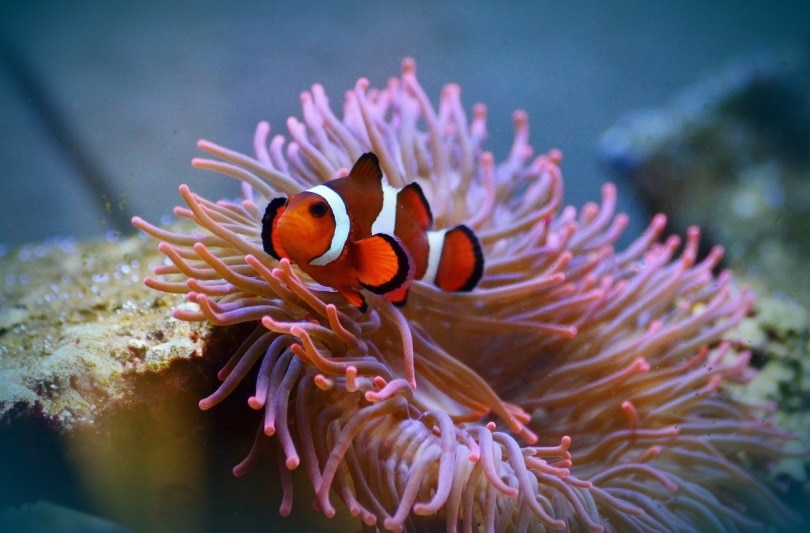
Clownfish are peaceful fish that show minimal aggression towards other fish and their species. As with all fish, they do not show much interest to their owners but are fun to watch as they explore around the aquarium and interact with anemones.
Clownfish are active and rarely shy. You may not always see them swimming around the tank once they have taken shelter inside an anemone, but once they come out in search of food, their activity levels increase, and they are eager to explore.
If a clownfish feels threatened, it will hide in an anemone until they deem it safe to come out. They use the anemone to hide away as no predators can withstand the stinging tentacles of an anemone other than them.
Appearance & Varieties
With over 30 species of clownfish to choose from, there are so many different colors, patterns, and sizes to own. The common clownfish is a standard orange color, with fine black and white lines that outline an attractive pattern. When people imagine what a clownfish looks like, the common clownfish is usually the first species to come to mind.
The saddleback clownfish is dark in color and has a prominent pattern of black and white, with a small patch of orange on the head. The maroon clownfish has a deep rusty red coloration with thin outlines of white. Clark’s anemone clownfish is yellow, black, orange, and white in coloration, but they are also on the darker end of the species. Tomato clownfish are interestingly colored. They have a deep black undertone layered over a deep orange color with a vertical white line near their head.
Clownfish can range in size from 2 to 12 inches, with the smallest species being the true Percula clownfish, and the largest being the golden stripe maroon clownfish.
How to Take Care of Clownfish
Habitat, Tank Conditions & Setup
The overall layout of a clownfish aquarium should be saltwater set up with plenty of anemones to hide in. They also enjoy reef aquariums because this replicates their natural living environment the best. You do not want to cramp their environment to ensure that they have enough space to swim comfortably. A simple rectangular or bow-front tank will make a great home for a clownfish.

Tank Size
The size of the tank is species-dependent. You do not have to go overboard with the smaller species tank size unless you plan to keep a large group of them. The smaller species of clownfish should have a minimum of 30 gallons, whereas larger species may need a 55-to-75-gallon tank. However, these are only minimum sizes, most clownfish keepers will house their clownfish in a 125-gallon tank. This size can fit all the necessary items while still leaving you with room to add as many clownfish as you want.
Water Quality & Conditions
Getting the water quality right for marine fish is important regarding their health. Clownfish require a salinity content between 1.020 to 1.025. Aquarium salt will help you reach these optimal salinity levels. The ammonia and nitrate reading should be at 0ppm, and clownfish can tolerate nitrate levels up to 20ppm.
Substrate
Clownfish are not picky over the type of substrate in their aquarium, but some substrates are not recommended for clownfish since they have the potential to change the water chemistry. Standard saltwater aquarium gravel works best.
Plants
Clownfish do not require plants in their aquarium if it’s filled with anemones. However, if plants are something you want to add to your aquarium, corals and various reef plants are recommended.
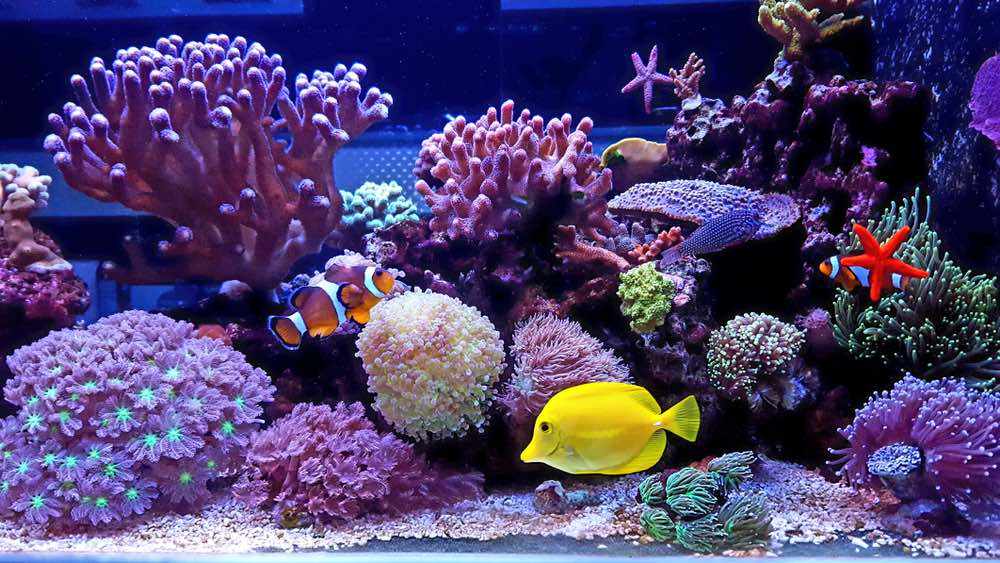
Lighting
Clownfish do not appreciate overly bright lighting inside of their aquarium, but a good quality LED light is recommended to help your anemone and reef plants grow properly.
Filtration
Filtration is important for clownfish because they produce waste from eating that needs to be cleaned up by a good-quality marine filter. The size of the filter depends on the tank size, but it is recommended to choose a filter that can filter the entire tank within an hour.
Are Clownfish Good Tank Mates?
Clownfish make good tank mates for the right fish. They are not aggressive and rarely bully other fish. If you plan to add in other species of fish with your clownfish, the tank size should be increased to accommodate the larger bio-load. An increase in tank size is also necessary to provide each fish with enough space. Keep in mind that since a staple in a clownfish aquarium is anemones, most species of fish can get stung by them.
- Dartfish
- Wrasse
- Basslet fish
- Chromis damselfish
- Yellow tang
- Butterflyfish
- Pygmy angelfish
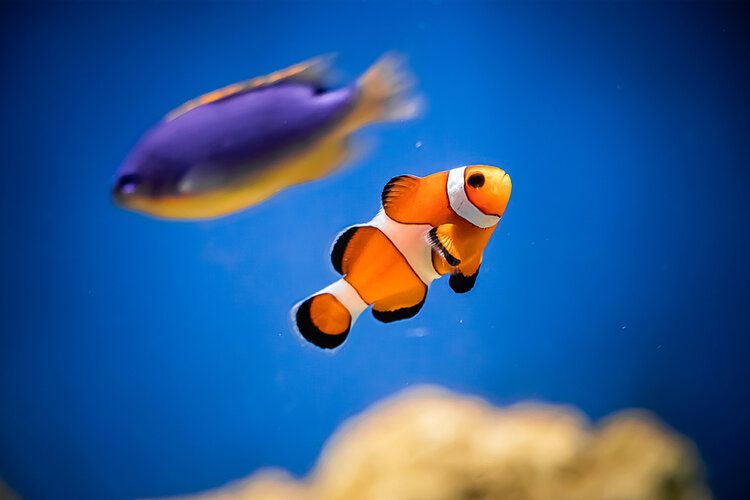
What to Feed Your Clownfish
Clownfish are obligated omnivores that eat plankton and algae. In the wild clownfish will eat plankton and will individually pick out different types of zooplankton and phytoplankton to eat. Clownfish also like to eat algae from the reef surface. Copepods, tunicate, and larvae are the main sources of plankton they eat from the water column, and algae make up a small percentage of their diet. They will also eat undigested foods from their host anemones.
In captivity, your clownfish should eat a mixture of algae, worms, zooplankton, and small crustaceans. The majority of their diet is live foods, and a pelleted diet should be included for extra nutrition. They will also accept a variety of fresh and freeze-dried foods. A high-quality diet will reflect in your clownfish’s health by having enhanced colors, proper growth, and energy levels.
Keeping Your Clownfish Healthy
When you first set up your clownfish’s aquarium, the tank should cycle first. This ensures that the tank’s water chemistry is ideal for your clownfish. The water should also be religiously tested for ammonia, nitrite, nitrate, pH, KH, and GH. The salinity content should be calculated to ensure that it is within optimal conditions for them. Aquarium maintenance has a huge role in the health and vitality of your clownfish. Regular water changes should be conducted to keep the water chemistry within optimal levels. Clownfish should also have a heater to maintain a warmer water temperature.
Clownfish prefer to live in groups of six or more, so keep this in mind when stocking their aquarium.
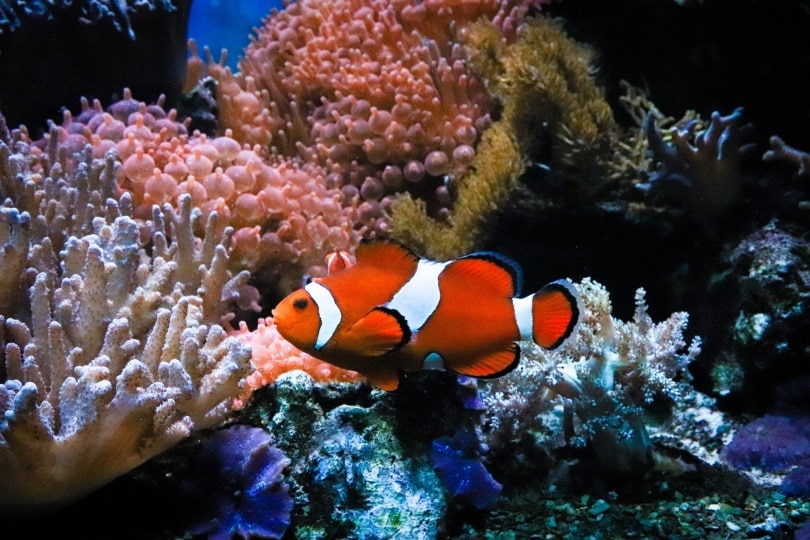
Breeding
Clownfish are considered external breeders. This means that the female will deposit eggs that the male fish will then fertilize. To successfully breed clownfish, you will need a bonded pair, to begin with. Most captive-raised clownfish are easy to breed, but it is best to leave breeding to more experienced keepers. Clownfish should be sexually mature before they are ready to breed which is generally over one year of age. If you want to successfully raise their fry to the juvenile stage, you need to be well prepared to meet their dietary and housing requirements.
Are Clownfish Suitable for Your Aquarium?
Overall, clownfish make great marine fish for those looking to start a simple yet beautiful aquarium. The smaller species of clownfish are perfect for those who want a marine aquarium but do not have much space. They can comfortably fit in a 30-to-55-gallon tank and are decorated with colorful anemones and reefs. If you want to add a shoal of clownfish to an already established aquarium, first determine if the other fish are compatible and that there is enough space to house each fish comfortably.
Featured Image Credit: Alex Stemmer, Shutterstock



